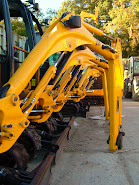Equipment.
There's a fair bit of kit involved in my job, a lot of it is common in other jobs but I'll describe it and it's uses.
Chains.
Probably the biggest range of kit that I carry, different chains for different jobs detailed below.
Drop Chain.
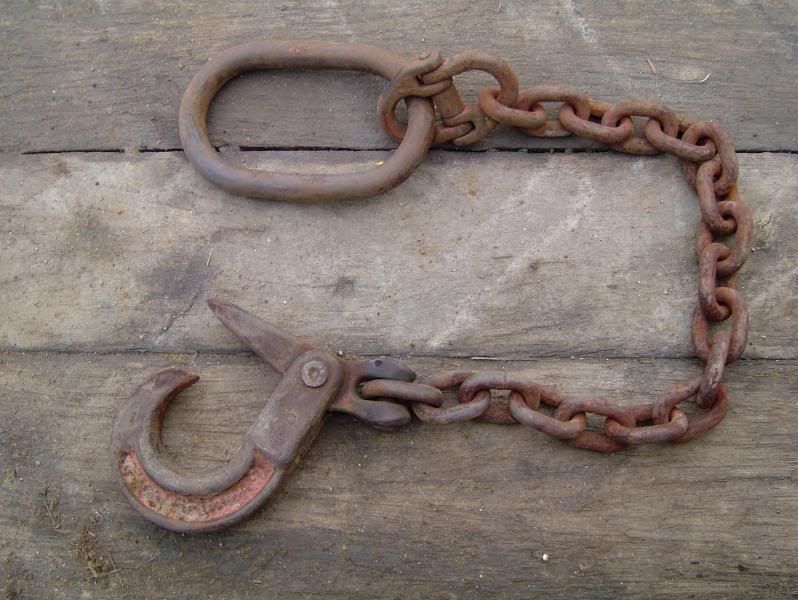
A simple short chain, generally used with a shackle through the lifting eye on a digger. Hook can be looped through sling eyes or bucket pin and back onto ring. Fitted with a large oval ring so can be used on a forklift, although this is not ideal.
Lifting Chains.
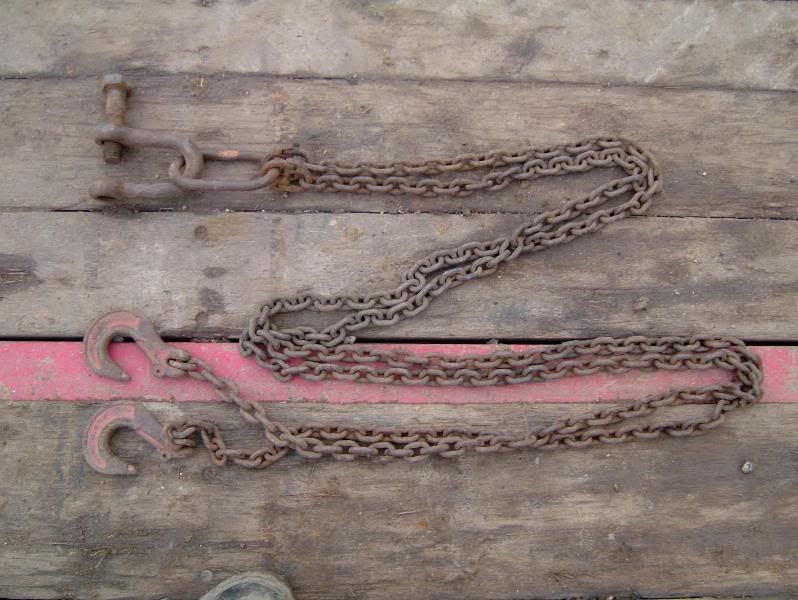
A set of 2, or pair of brothers. Also found in 4's but more usually associated with a crane or HIAB.
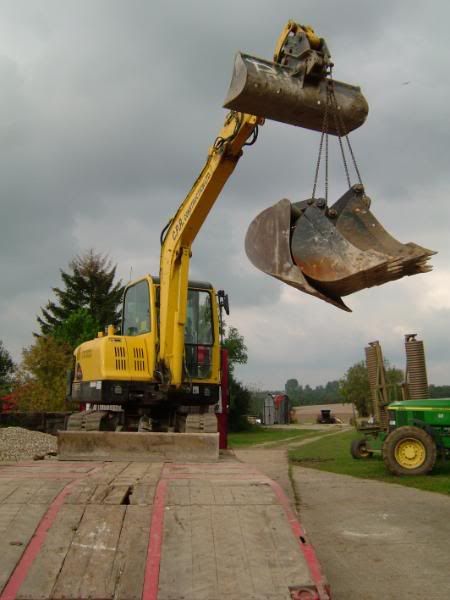
As per drop chain used with shackle or on forks, usually used for lifting several buckets or diesel tanks / drums. This set has sling hooks which are missing the safety clips.
Securing Chains - Sling Hooks
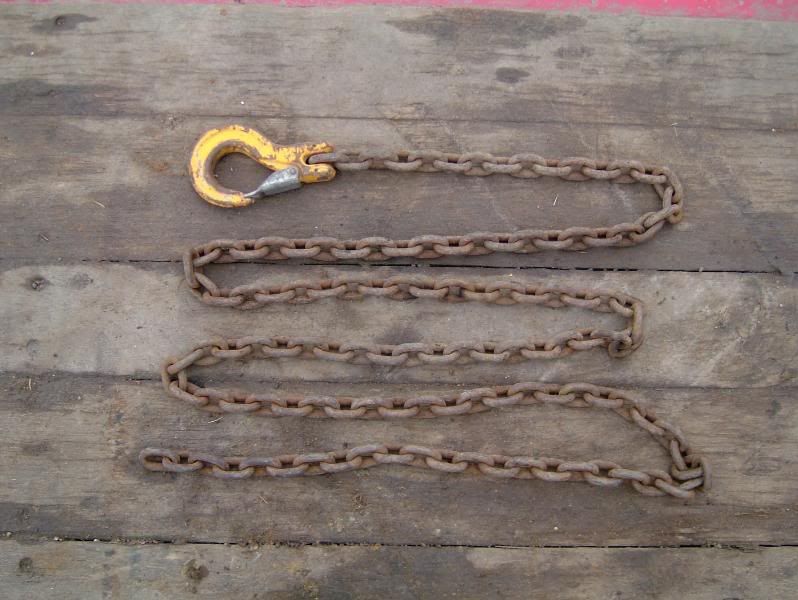
I carry a couple of these chains with large sling hooks on one end only for securing plant with smaller chain eyes. The hook is hooked onto the eye and the tail of the chain is run through a D ring and back towards the hook. A chain tensioner can then be used to pull it tight.
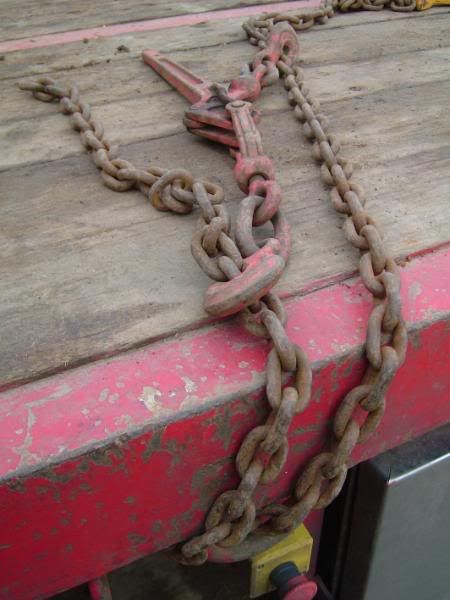
Securing Chains - Grab Hooks

The most commonly used chain for me. As the name implies the hook grabs back onto the chain itself, useful to shorten the chain around a D ring
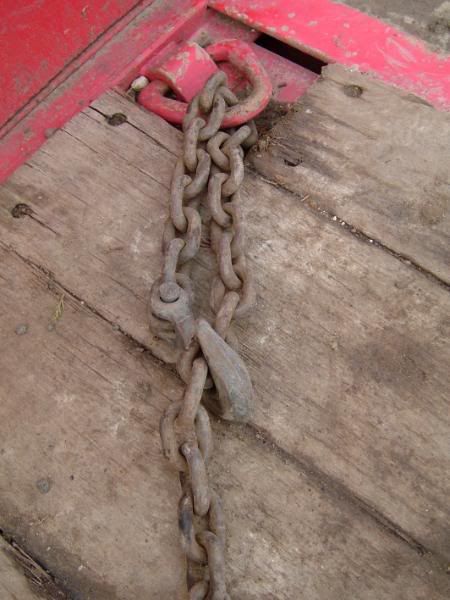
or to grab onto the side of the body which is how I usually use them.

Again used with a chain tensioner to pull tight.
Chain Tensioners.
A 3m long chain with a hook on either end is no good without something to pull the hooks towards each other and make it go tight, this is where the tensioners come in.
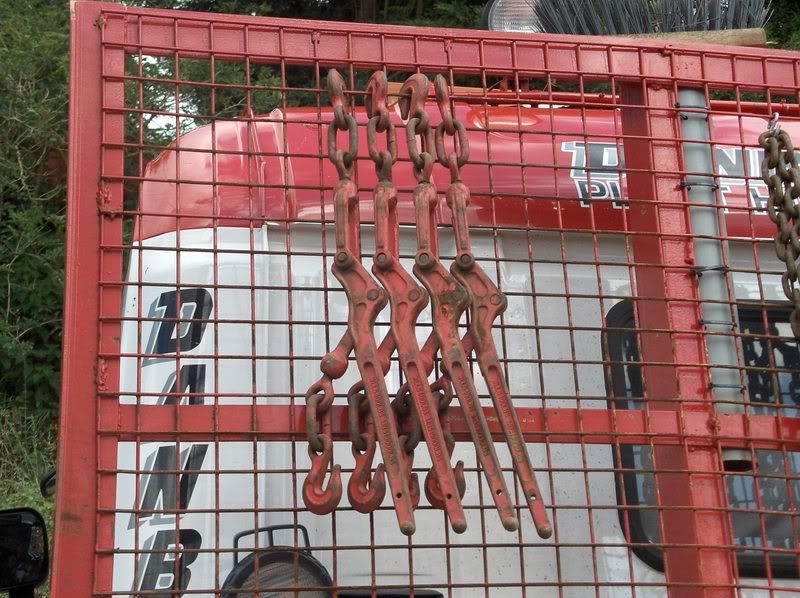
Dog Type.
These are not commonly used in the industry anymore, although I prefer the use of these to the ratchet ones. They are quicker to use and require essentially no maintence. To use these you attach the chain on one side and pass over the equipment to be secured and let the other hook hang loose. You pull the chain tight by hand and attach the top hook onto the chain like this.
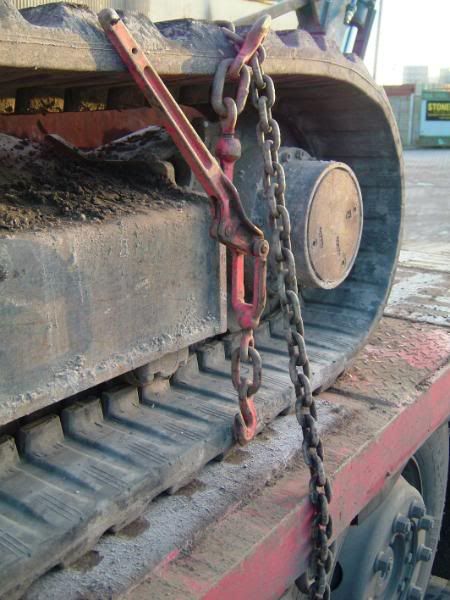
You then hook the free end of the chain onto the body and pull tight by hand, attach the bottom hook of the dog so that the chain is now semi taught and the dog bypasses the slack chain.
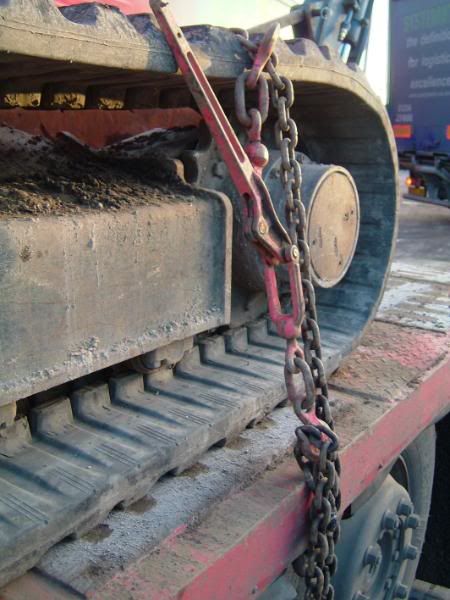
You then pull the handle down, being extremely careful to keep out of the way until it snaps shut. If you lose your grip or cannot close it, it may spring open with considerable force and cause injury if you are in the way. This is the reason for their lack of common use. A scaffold bar can be used for extra leverage to get them closed although bear in mind that it makes a bigger bar to dodge if it opens unexpentantly.

I usually wrap the slack chain around the handle so as to prevent any chance that it could inadvertantly spring open.
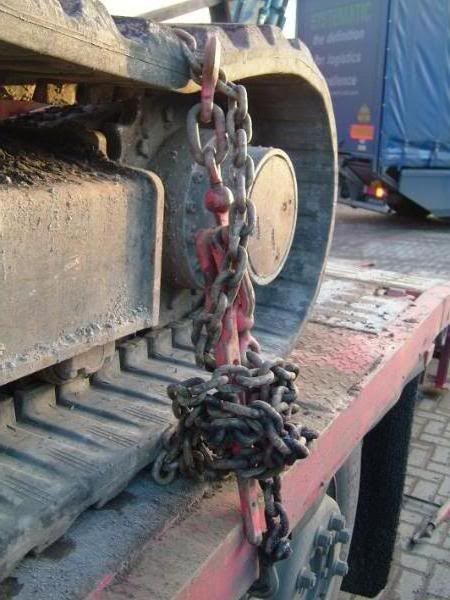
The above procedure can also be applied when passing the chain through a D loop.
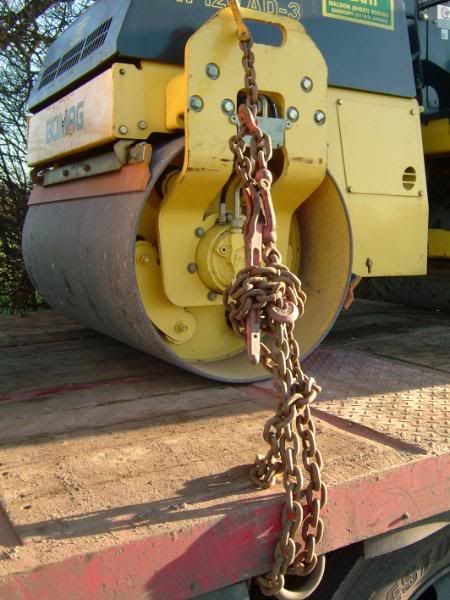
Removal is carried out with care at arms length.
Ratchet Type.
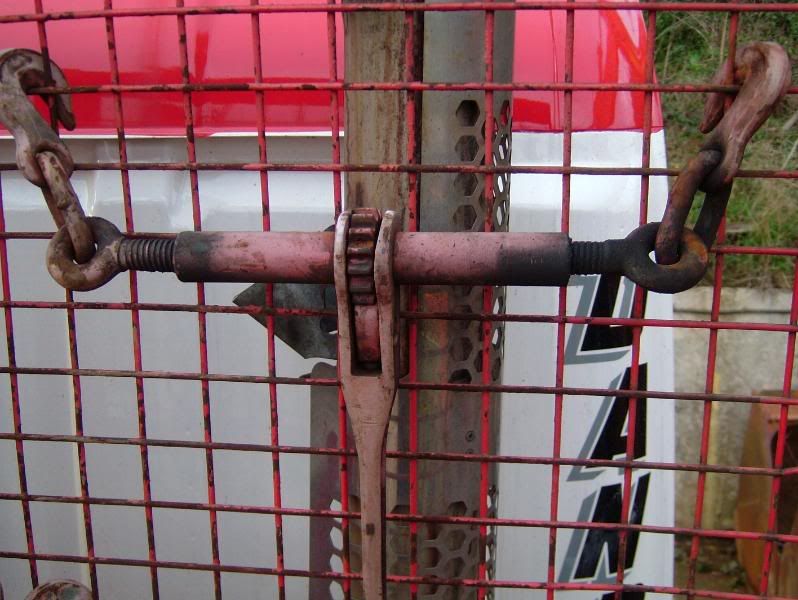
Basically this fulfills the same function as the dog, but is safer as it tightens up in a gradual process. You start with the hooks wound out and set the cam in the centre so it tightens the chain and clicks freely over the cog when you pass the handle the other way. It gradually pulls the hooks inwards, however if you haven't got the chain tight enough by hand or not started with the ratchets wound out enough you find them fully wound in and the chain still slack. You then have to unwind and start again. Removal is a simple matter of clickng the cam over and going the other way.
Ratchet Straps
Needless to say I also carry a fair few ratchet straps, and a few bits of rope.
